Along with all the other essential kitchen items from the last post, I also devote one of my produce drawers to the use of onions. You might’ve noticed that many — in fact, most — of my recipes include onions. Joe likes to use red onions in his weeknight salads, so at any given moment, you could come over to my house and find a drawer full of those papery alliums in the refrigerator.
(*Tip*: I’ve found that refrigerating onions also mitigates the sulfury havoc they can wreak on your eyes during chopping.
Having onions on hand made it easy to pull together a simple onion marmalade yesterday, of which I made plenty to use as both a garnish for Sunday night pork chops, as well as an accompaniment to appetizers I might snack on this week. It was very simple to put together — all you need is a bit of time. This would make a great buffet item for holiday parties, or is good just to snack on at home with some crackers and cheese. To be honest, I can hardly wait to get home from work tomorrow. Some crostini with bleu cheese and onion marmalade is already calling my name.
To start, gather one medium red onion and a medium yellow onion. I also had half of a large yellow onion sitting in my fridge (wrapped in plastic wrap to keep it moist), so I used that too.
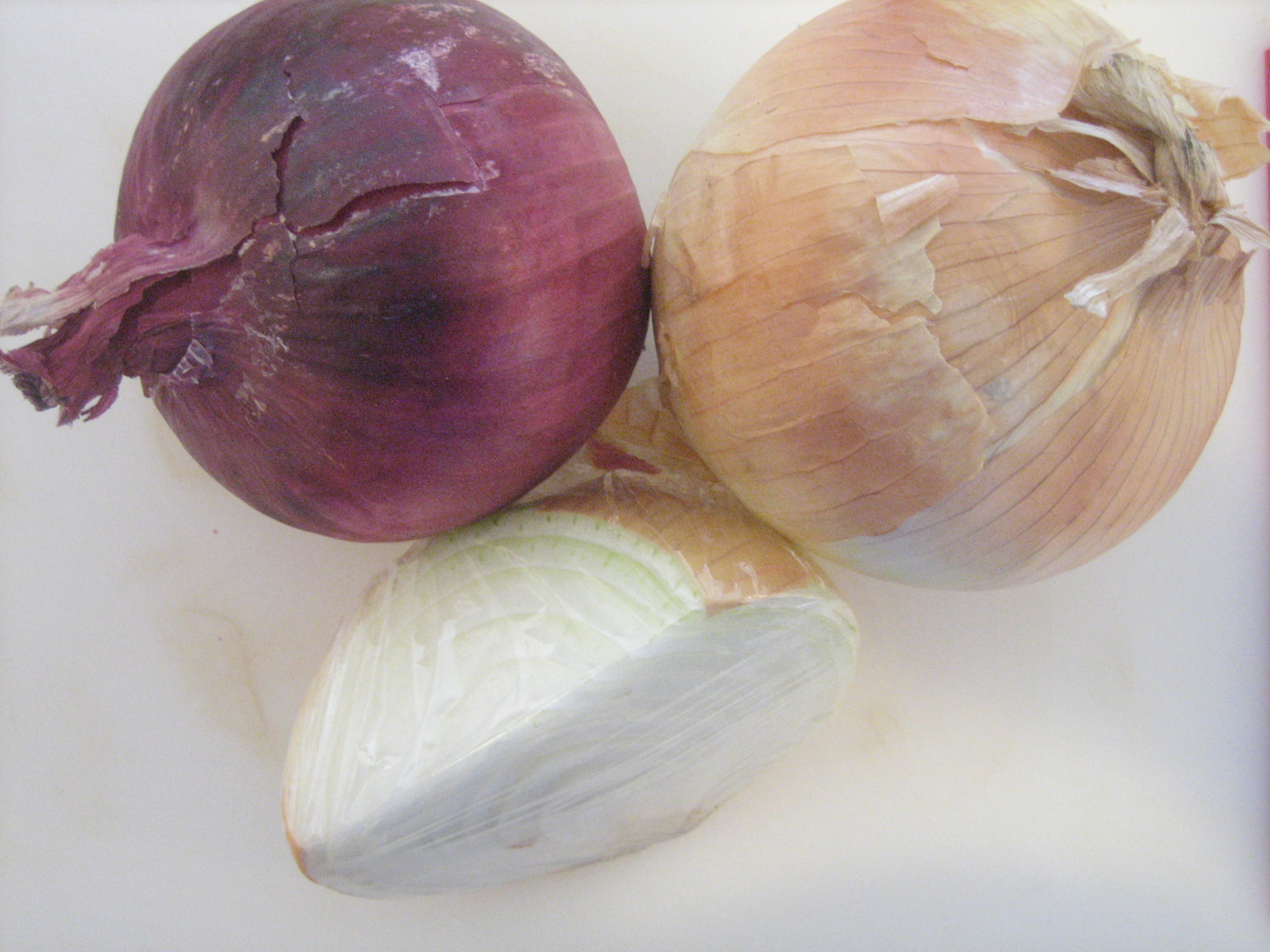
I decided to julienne the onions, to make for a chunkier marmalade, but you could certainly dice the onions finely if you wanted something smoother. Later this week I’ll post an onion chopping tutorial that talks about the easiest way to dice.
With the whole onions, remove both the root end and the stem end, then slice the onion in half from pole to pole (not along its equator). You’ll end up with two halves, like this:
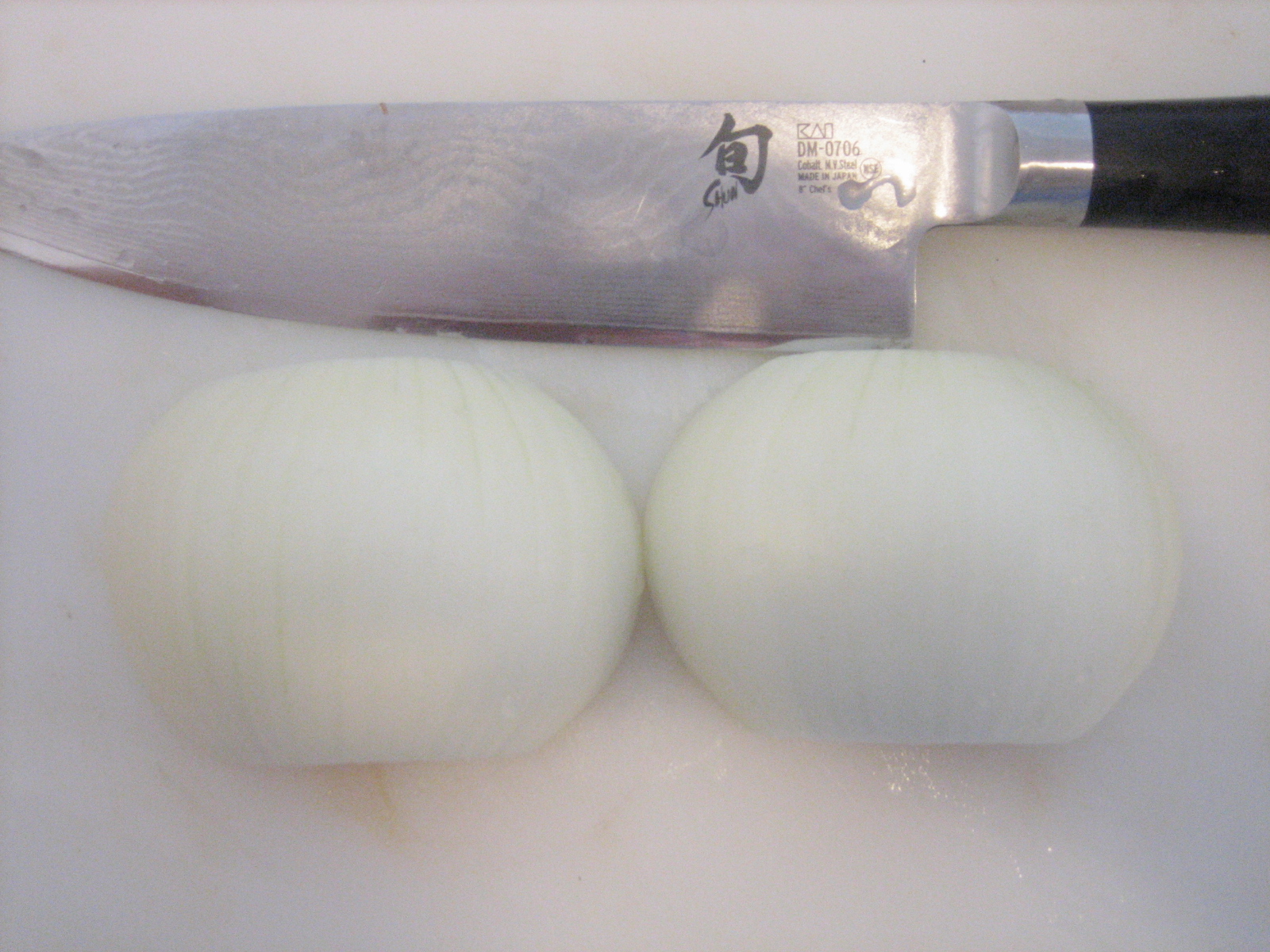
Joe was looking over my shoulder as I uploaded photos, and pointed out that this picture looks like onion boobies. His wisdom never ceases to amaze me.
Next, to julienne the onion, you want to make thin slices from pole to pole. You can use the faint natural lines on the onion as your guide if that’s easier. The end product looks like this:
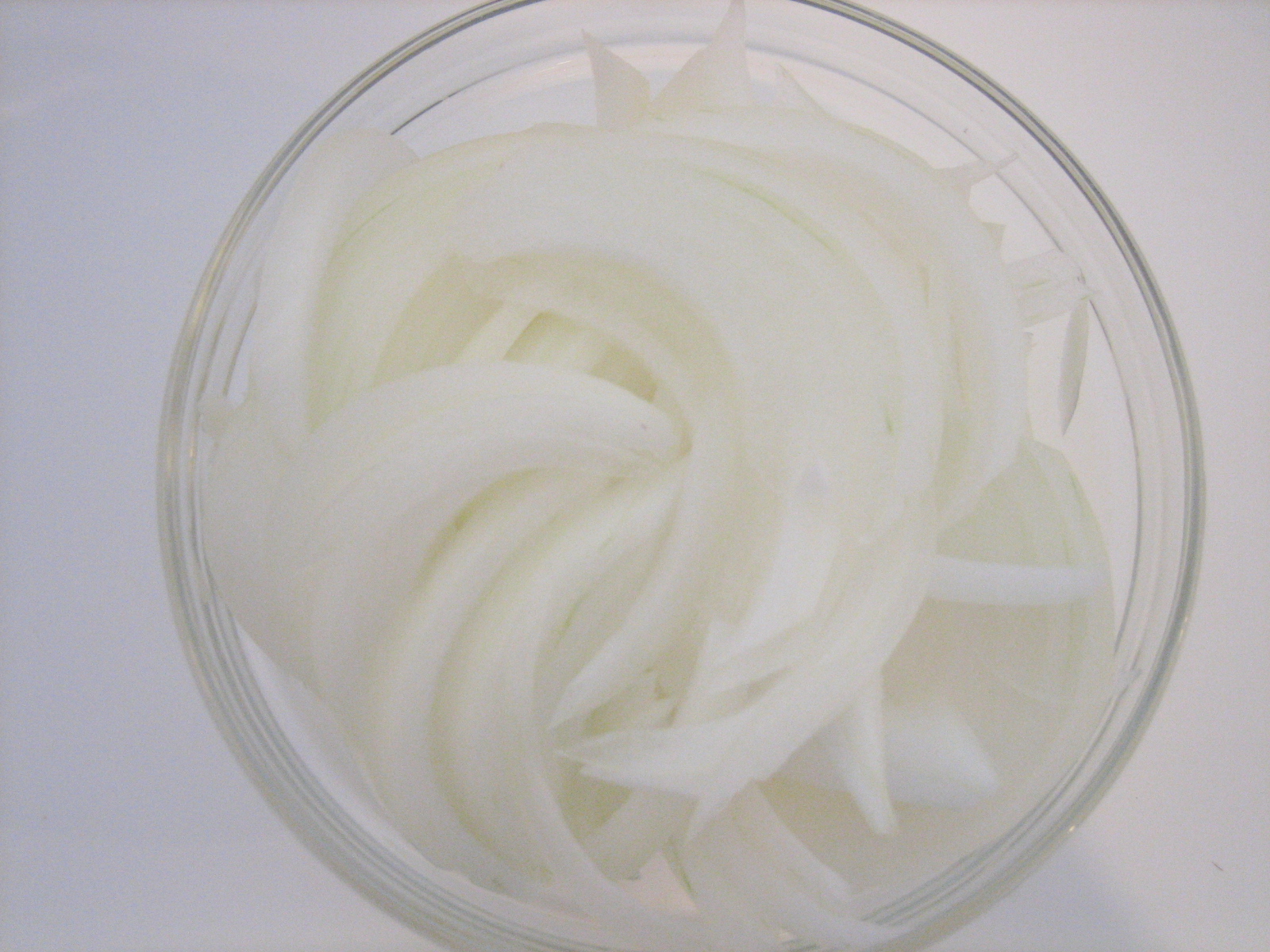
Now, do the same thing with the red onions.
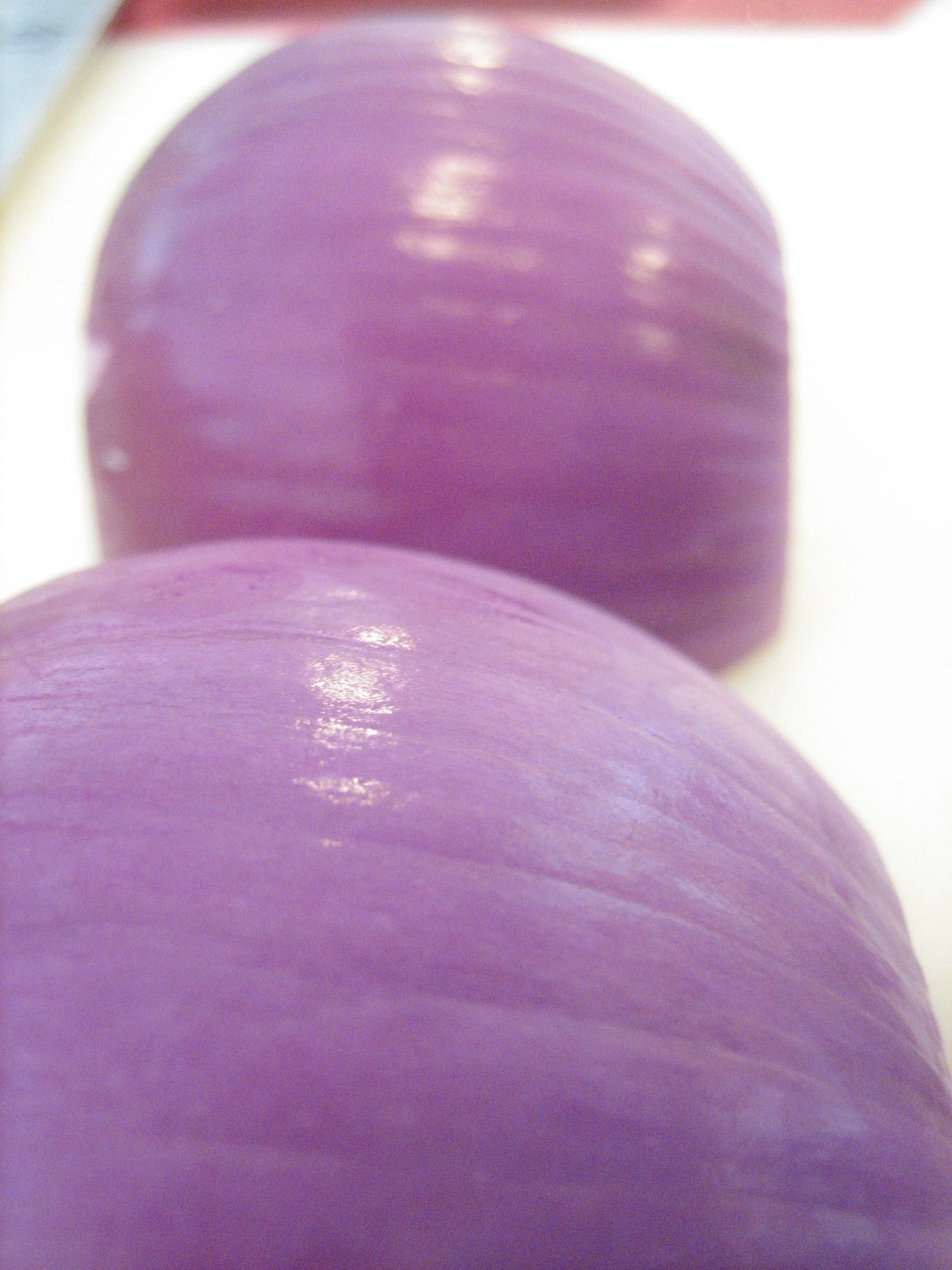
If I had to guesstimate, I’d say you’ll end up with around 2 to 2.5 cups of julienned onions.
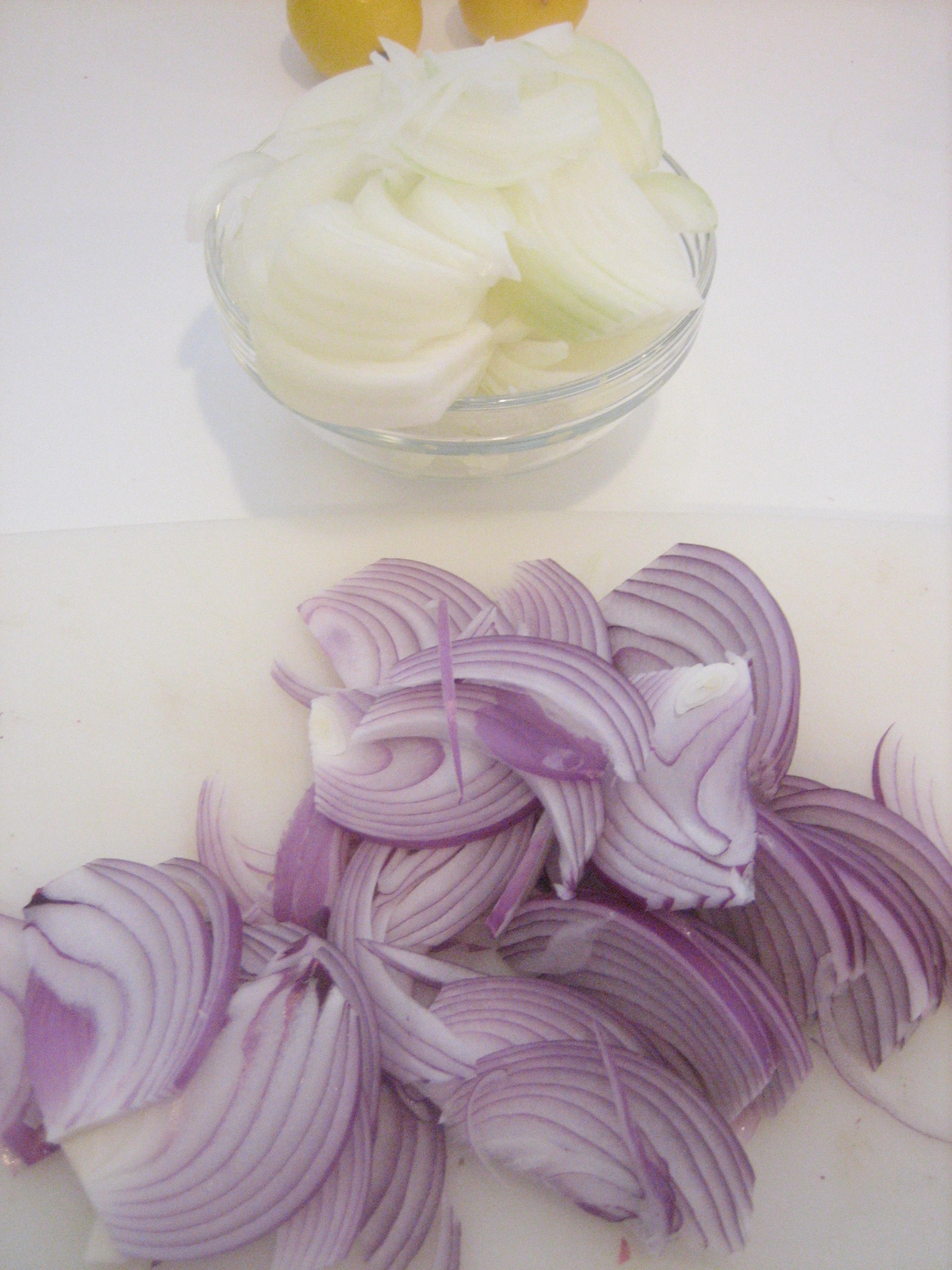
Heat around 1/4 cup of olive oil in a medium sized pot. Turn the heat up to medium high, and get it good and hot.
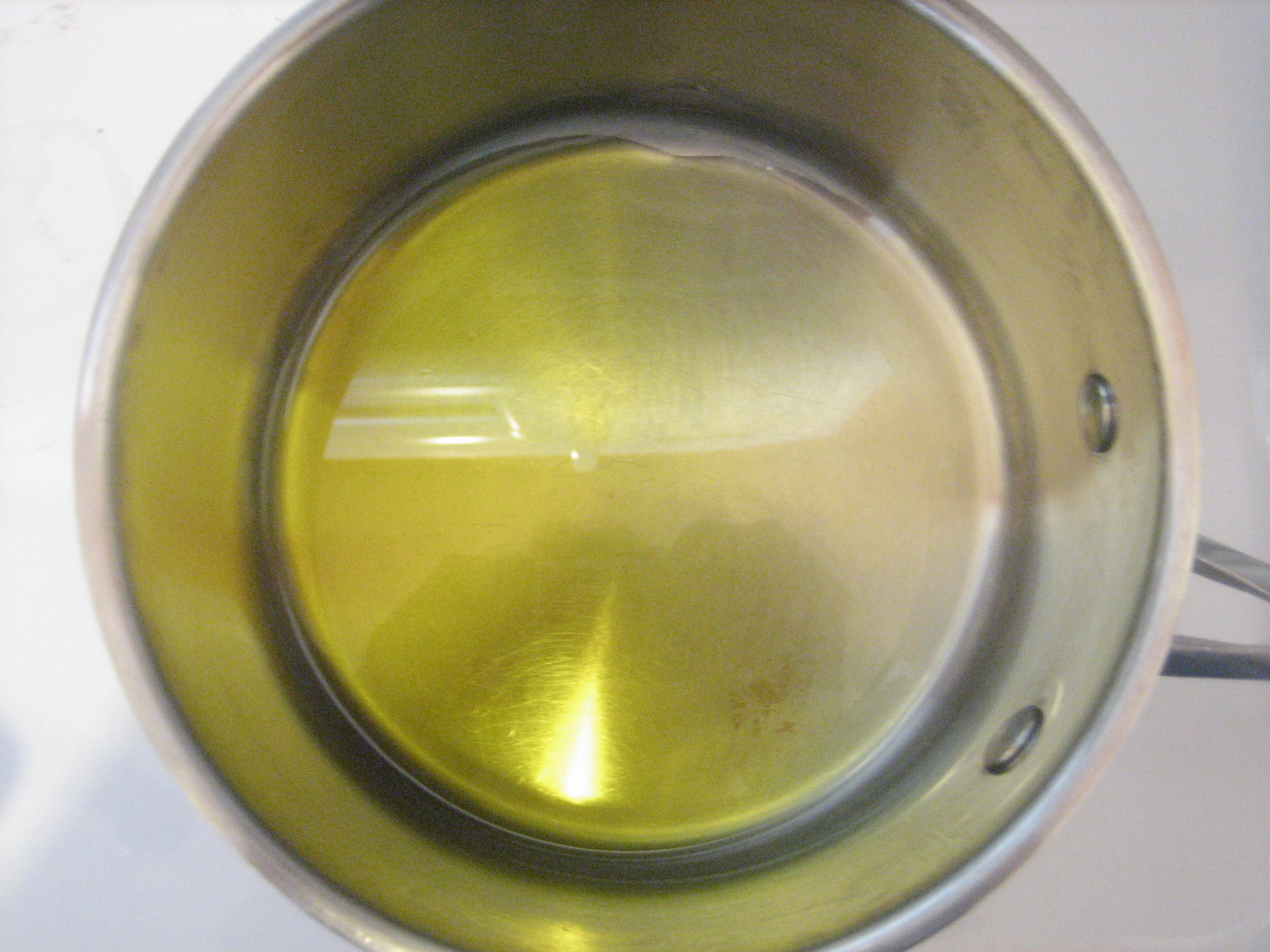
Meanwhile, gather up a few other ingredients you’ll need to make the marmalade. Sherry, balsamic vinegar, and crushed red pepper flakes come to mind.
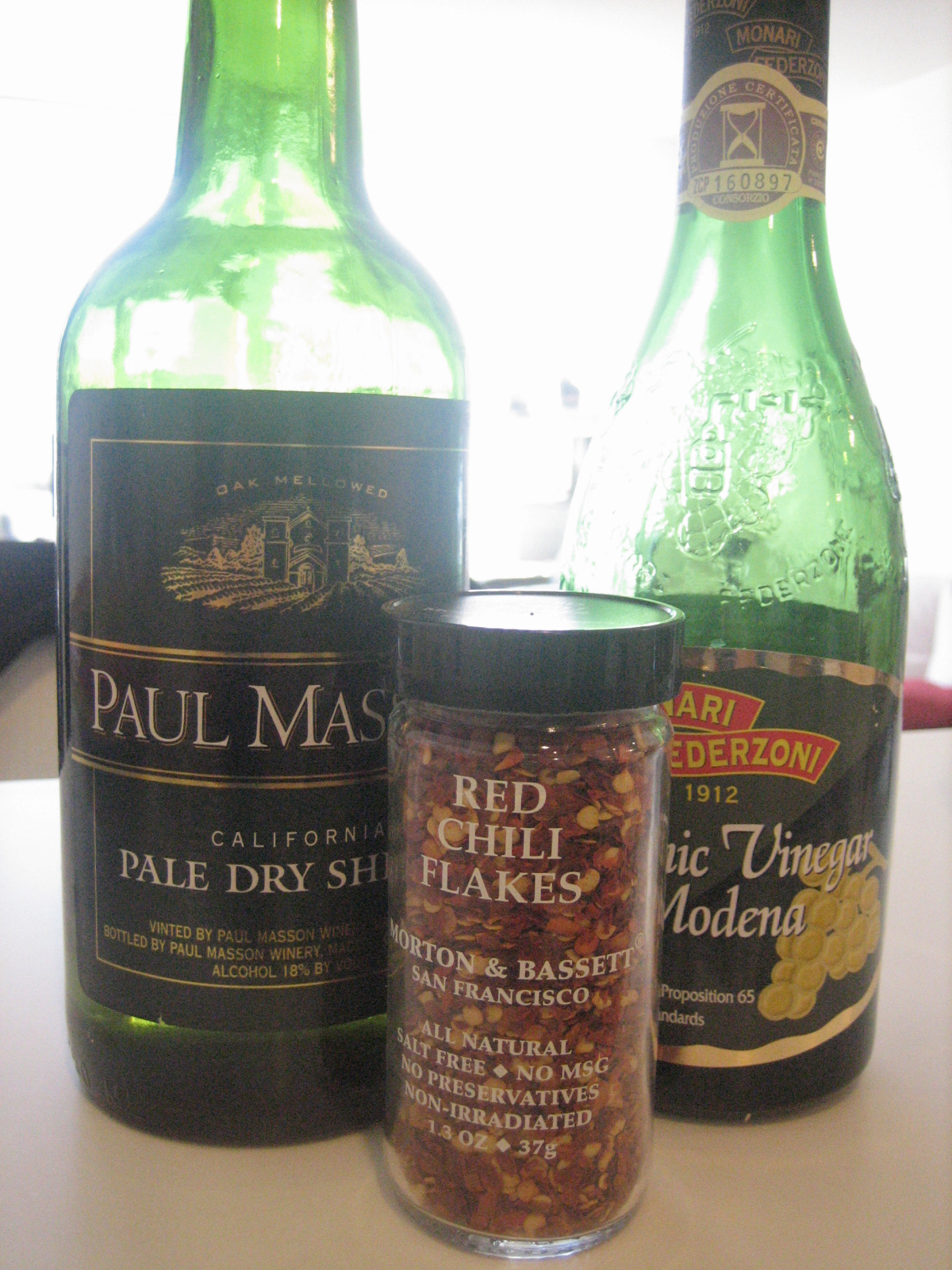
You’ll also need some light golden brown sugar, regular granulated sugar, thyme, lots of kosher salt, and freshly ground black pepper. Once the oil is hot, add in all the onions, along with a teaspoon of the chili flake (less if you don’t want as big of a kick), a good amount of kosher salt, and the leaves from 4 or 5 sprigs of thyme.
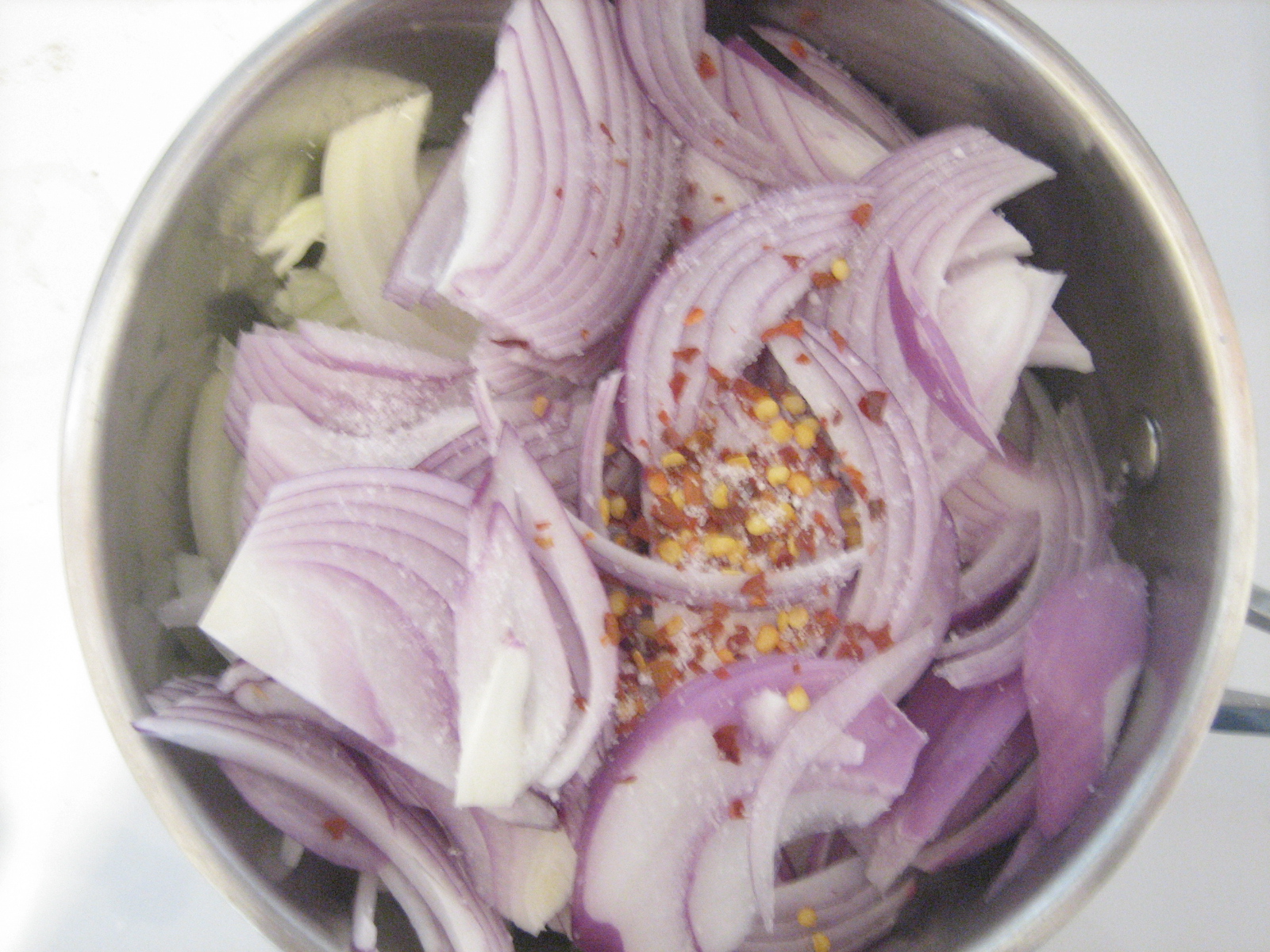
Once this cooks for around 5 minutes, you’ll notice the level or “height” of the onions will have decreased significantly. Adding lots of salt at the beginning will not only season the onions well, but help draw out water and break them down faster.
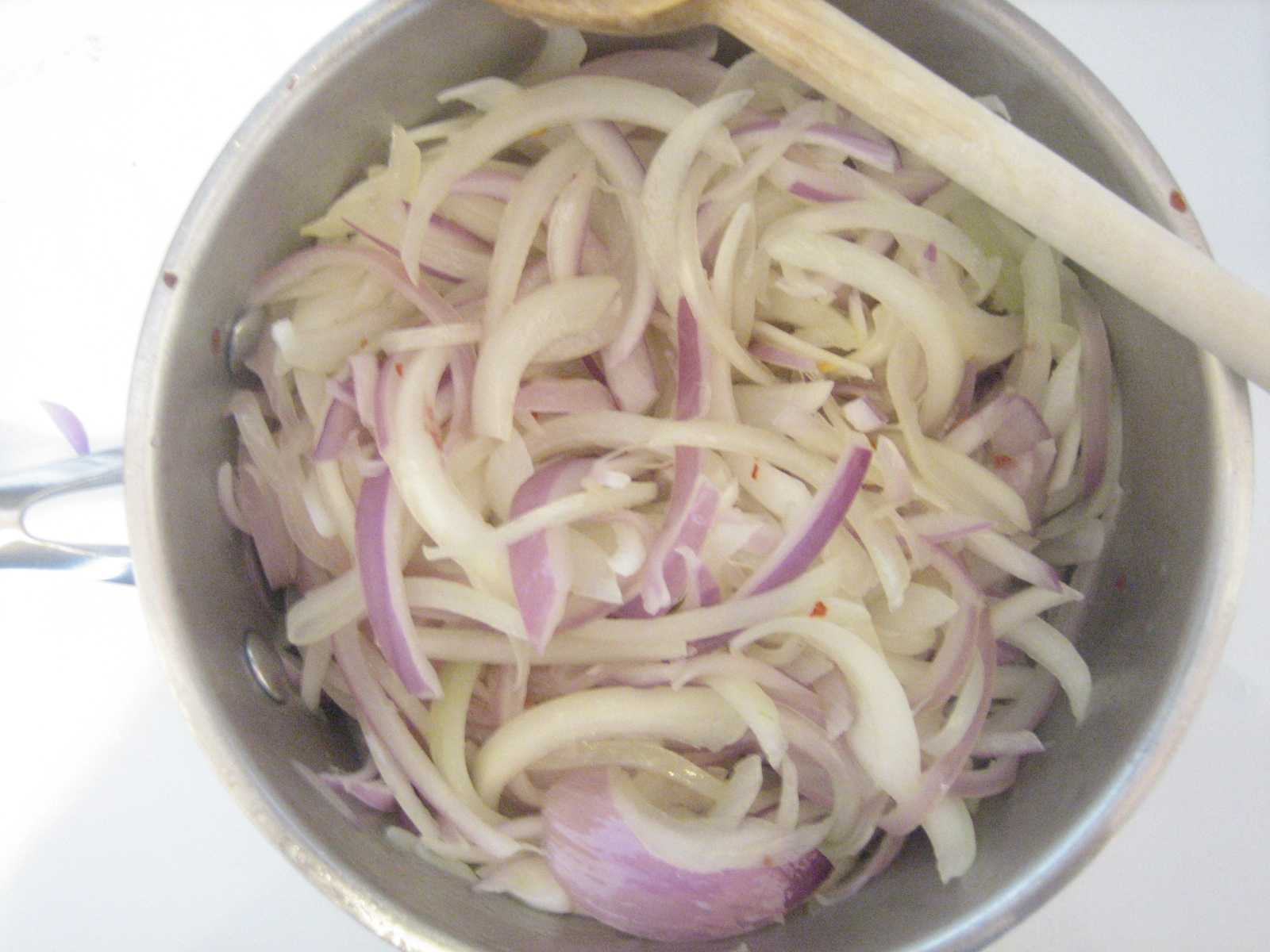
Keep cooking for at least 10 minutes. 15 would be better.
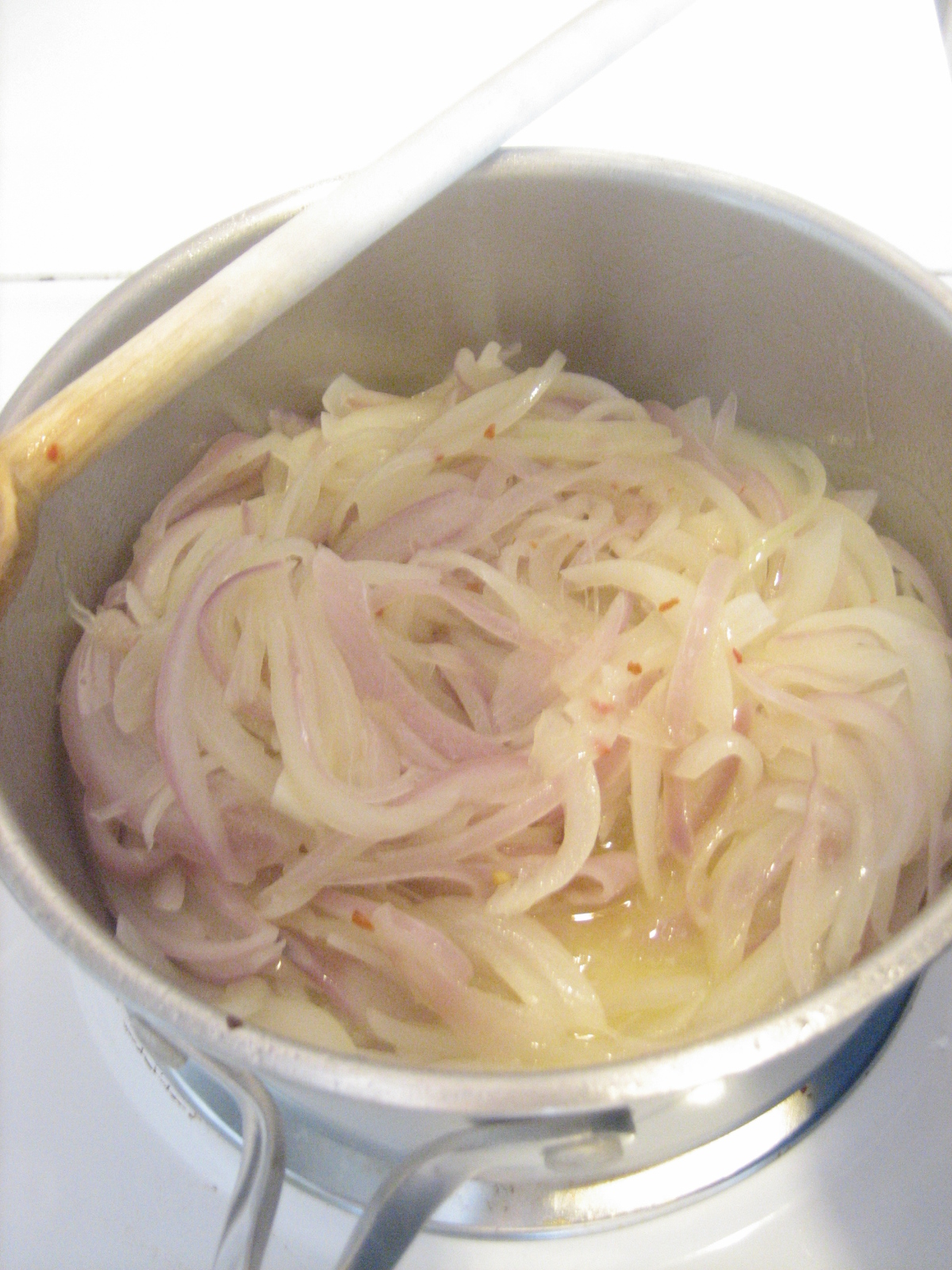
As they cook, and as you’re stirring, you’ll notice plenty of water accumulating at the bottom of the pan. That salt is doing its job well, I tell you what.
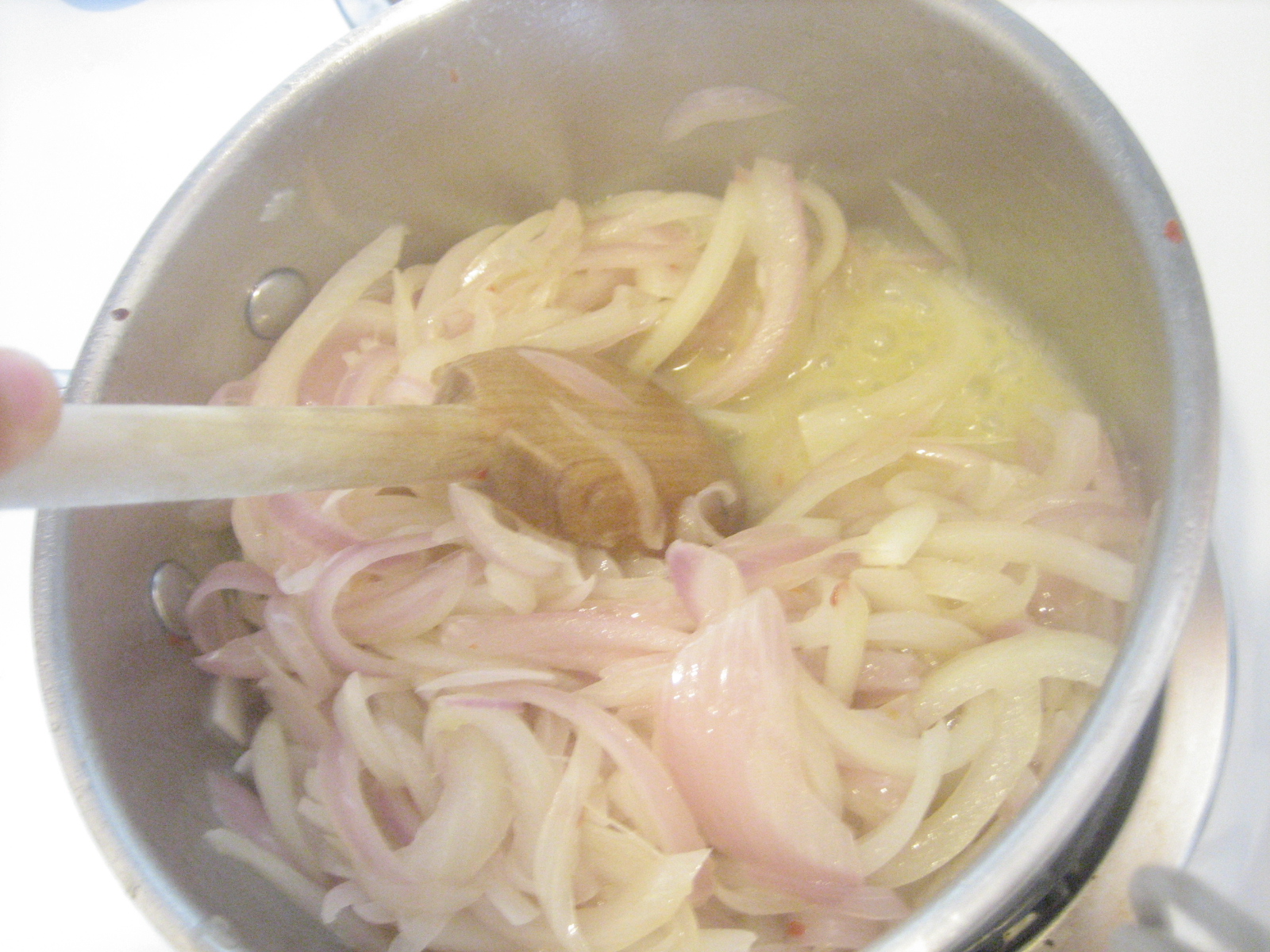
Keep cooking the onions until the bottom of the pan is nearly dry when you stir the onions around; this means enough of the liquid has evaporated. Add in some sherry (1/4 to a 1/2 cup of so — there are no right answers here) and half as much balsamic vinegar. By the way, now’s not the time to break out your fancy pants 30 year old balsamic. I like to buy some cheap-o balsamic just for things like this. Who wants to waste gorgeous, syrupy aged balsamic in cooking? Save the good stuff for salads or garnishes, ok?
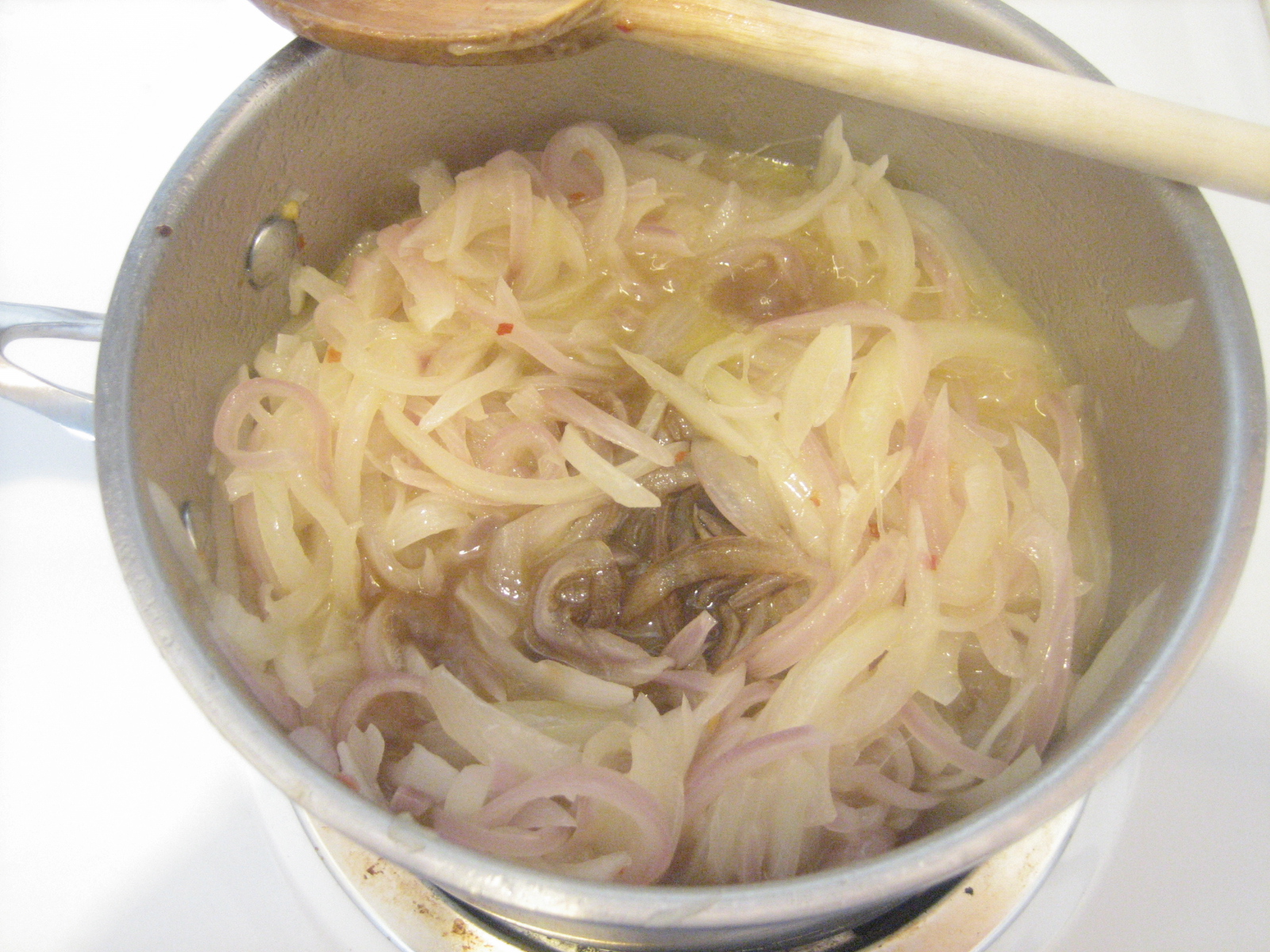
Once this has cooked for a few minutes to burn off the alcohol of the sherry, add 3 tablespoons of brown sugar and 1.5 tablespoons of granulated sugar. Stir it around to combine, then keep cooking this mixture. Taste the onions to check for seasoning; mine needed more salt and a shot of acidity, so I added about a tablespoon of fresh lemon juice.
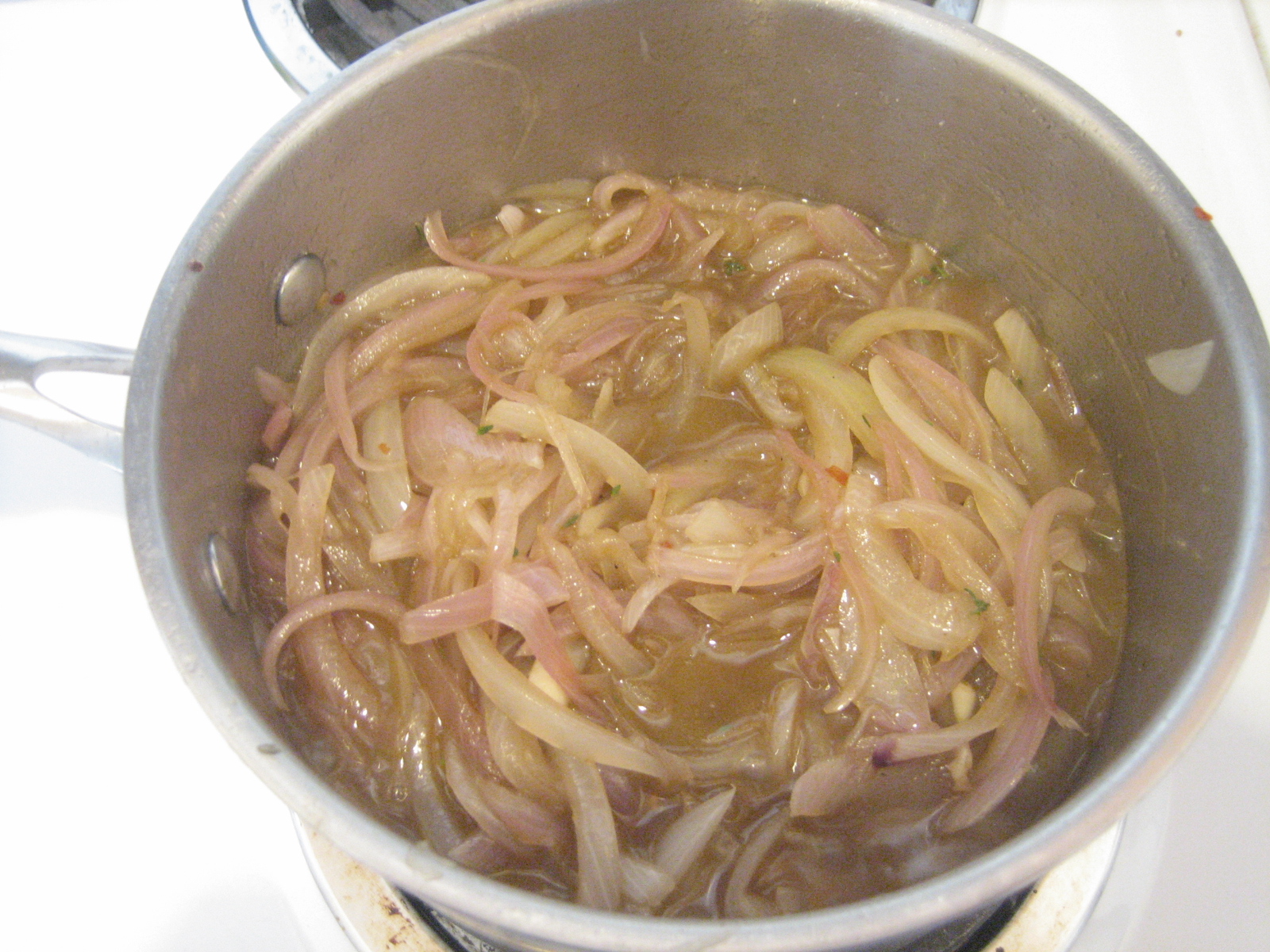
Reduce the heat to low and let this cook slowly for as long as you’d like. The longer it goes, the more the onions will break down and the more concentrated the flavors will be. As it cooked, I put a lid on the pot at a crooked angle, so that the excess liquid could evaporate, but not too quickly. After a shower, a 3.5 mile walk with Joe, and some French flash cards, my marmalade looked like this:
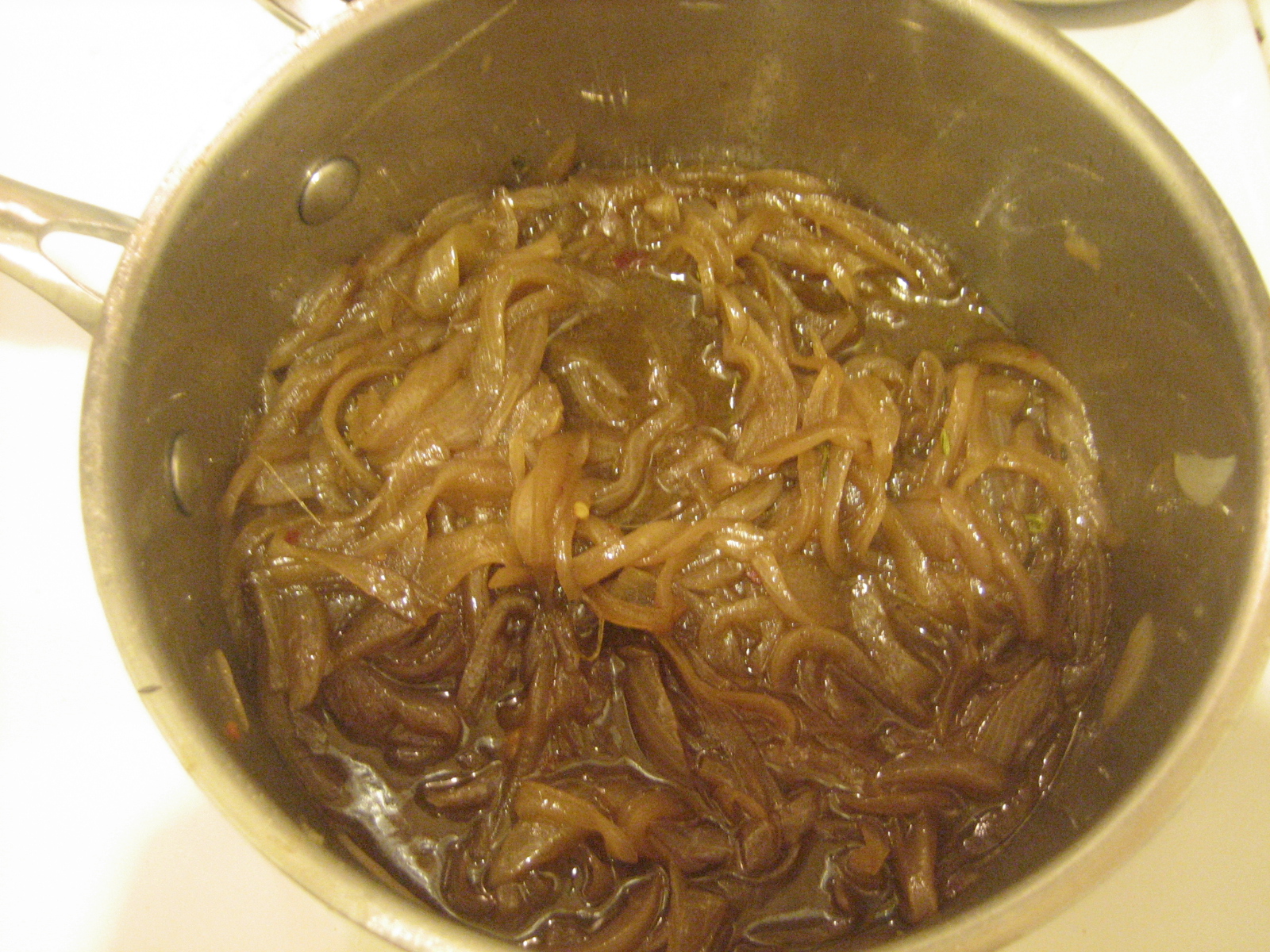
It tasted pretty amazing, if I may say so myself. The perfect accompaniment to pork chops I had brined overnight in a mixture of water, brown sugar, sea salt, bay leaves, thyme, mustard seed and crushed garlic. I pan roasted the chops, then served them with roasted Brussels sprouts and cremini mushrooms.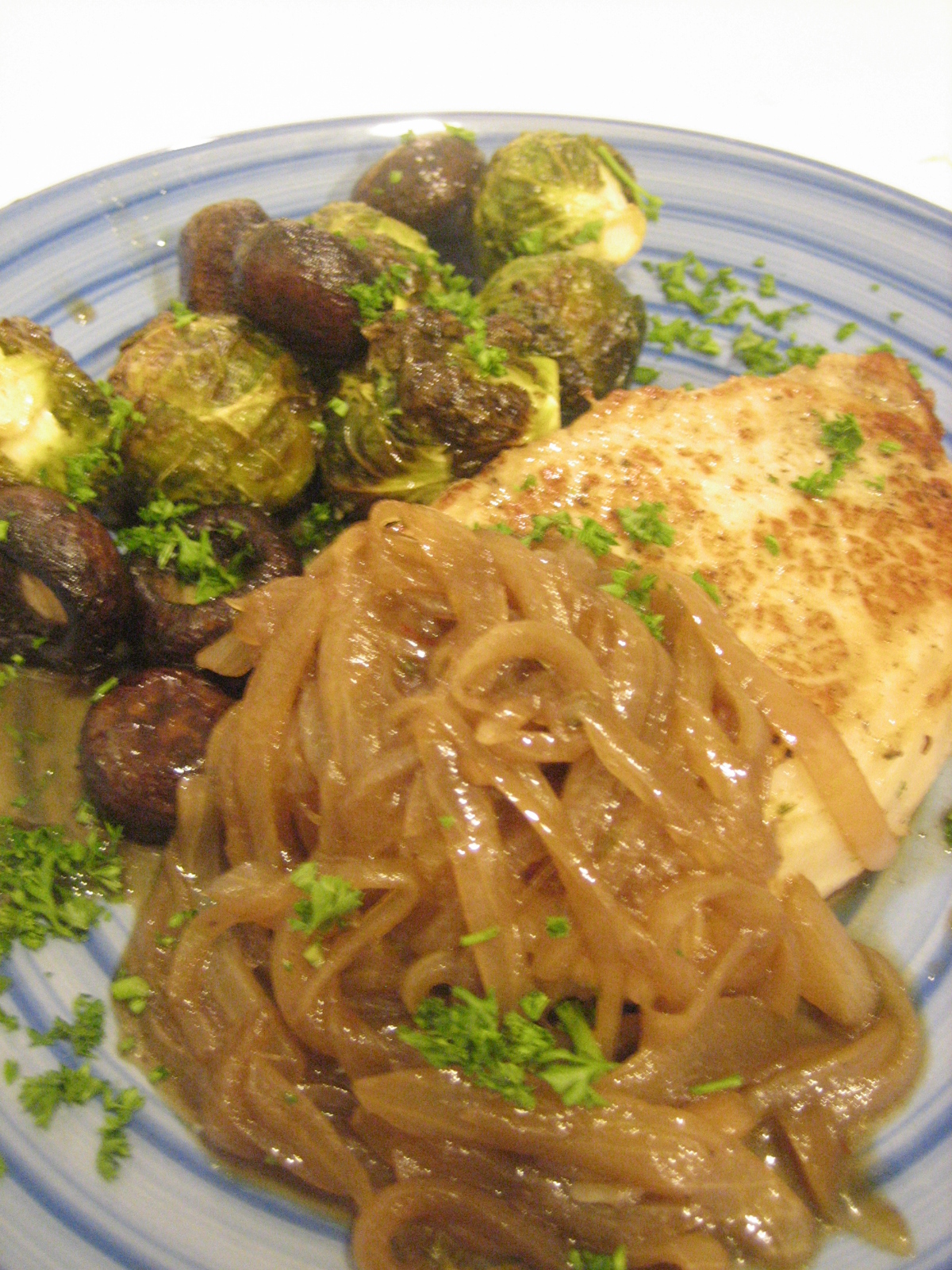
If you haven’t ever roasted cremini mushrooms before, I suggest you do so immediately. Tossed with olive oil, salt and pepper, all of the water in them cooks out, and their earthy, deeply umami flavor becomes concentrated. Contrasted with the sweet, slightly spicy marmalade, this dish practically screamed fall.
As we ate, I asked Joe tentatively, “Do you like the marmalade alright?” I was sure he’d prefer the crisp-tender Brussels or the juicy, barely pink pork chop over my special Sunday night dinner garnish.
“Are you kidding?” he replied through a full mouth, “The marmalade is the best part.”
Gratifying words if ever there were any.





